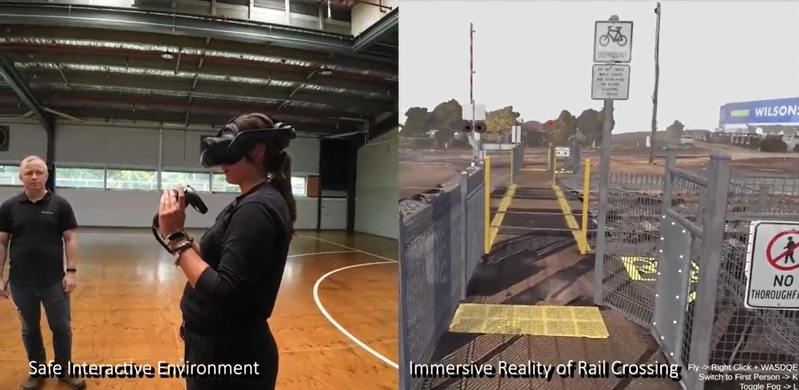Designing a safety critical environment, and getting it right, can be a time-consuming (and subsequently expensive) business. Particularly when you are conducting multiple trials to test a number of new concepts and technologies.
In many cases, testing changes to equipment and infrastructure in rail can often involve either exposing participants to the risk of working in a live environment, or temporarily closing the relevant area in order to conduct the tests. This in itself can be problematic due to the large number of restrictions that apply to introducing changes (even temporarily) to the railway.
Thanks to the availability of new Virtual Reality (VR) systems, both the design and user testing process can now be significantly streamlined and conducted more safely, with different iterations of the environment trialled more quickly and effectively.
Last year, Acmena used a VR system provided by DTP to conduct a user evaluation trial to assess potential changes to the standard level crossing pedestrian emergency escape gate configuration proposed by the Victorian Railway Crossing Safety Steering Committee (VRCSSC) Rail Crossing Technical Group (RCTG).
In the trial, Acmena human factors consultants observed participants as they navigated the crossing in VR, identifying changes to their behaviour when various design changes were introduced, such as new instruction signage and paint for the escape gate along with new floor markings.
Participants were required to ‘think aloud’ as they navigated through the gate before being debriefed afterwards to enable Acmena’s consultants to gain a deeper understanding of their perceptions and decision making.
According to the feedback provided, the VR system provided participants with a realistic environment with the trial providing useful evidence to support the assessment of the effectiveness of the proposed changes.
“It’s a very promising methodology that has many obvious advantages in terms of safety, cost and efficiency,” said Acmena Victoria State Manager and Principal Human Factors Consultant, Ian Banks.
“The study was conducted in the pit lane buildings at Albert Park with the Grand Prix facilities and track being put together around us. It was a challenge, but the participants all went away having found the experience to be worthwhile.
“The quality of the VR equipment and model generated a high level of immersion that underpinned the results. There were many lessons learned that will be taken forward into the next study.”
As an extension to this work, Acmena is currently conducting a second trial to test other potential improvements to the level crossing environment.
Related Content: Case Study – Victoria Active Pedestrian Level Crossing Review

